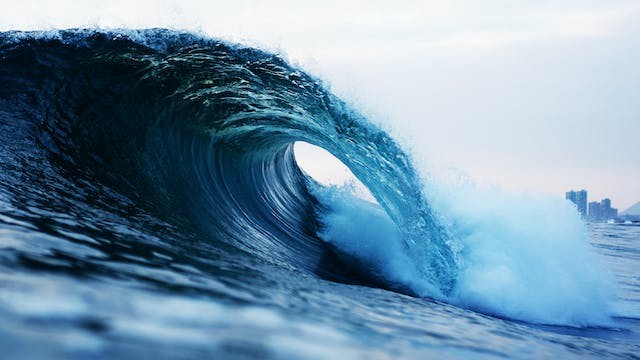
What Creates Ocean Waves?
Ocean waves come in different sizes and strength. Some are massive and appear to swallow you whole while in the water. At the same time, others are great enough for kids to play or surfers to glide on. Here's where waves come from.
What Are Waves?
Waves are just energy traveling through the ocean and making it spin. When a wave hits a surface object, it seems to lurch forward and upward along with the wave, but as the wave passes by, it descends and returns in an orbital rotation, landing back in the original place. If one imagines the water within a wave following this identical pattern, it is simpler to comprehend ocean waves as the outer expression of kinetic energy spreading through salt water. The water in waves doesn't move that far. Energy is the only thing that waves can carry across the ocean.
Where does the energy of a wave originate? Ocean waves come in various forms, typically categorized according to the energy source that produces them. The most frequent waves are surface waves, produced when wind blows across the interface between air and water. A disturbance is gradually created as the wind blows and the wave crest rises. Surface waves are the waves you see at the beach in typical weather conditions and are seen worldwide.
A sequence of extremely long waves known as tsunamis can be produced very quickly by underwater earthquakes or landslides that shift a significant volume of water. Storm surges and tsunamis can cause enormous damage to coastal habitats since they don't produce the usual crashing wave upon reaching shore but rather a tremendous rise in sea level.
What Creates Ocean Waves?
Wind is the most common generator of waves. Surface waves- referred to as wind-driven waves- are created when wind and surface water combine.
However, at least two factors lead to the birth of ocean waves - sunlight and wind. Here's how they work together to create waves.
Earth is heated unevenly by sunlight. It is strongest close to the equator and becomes less intense as it moves toward the poles. The wind is caused by such unequal heat. As hot air rises, cooler air is drawn in to fill the space. The wind is a result of this temperature differential.
One type of energy is wind. A portion of that energy is transferred to the water as it blows over it. Surface water particles move as a result of this energy. However, they do not just move in the direction of the wind. Instead, they make circular motions. On the surface, a water particle rises. It slows as it approaches the crest, the highest point. After that, gravity takes over and draws it back down. It travels in a circular motion, returning to its original point or a location extremely near it.
RELATED ARTICLE: Breakthrough Concept for Storing Energy without Batteries
Check out more news and information on the Environment in Science Times.










!['Cosmic Glitch' in Einstein's Theory of General Relativity Could Be Explained in This New Scientific Tweak [Study]](https://1721181113.rsc.cdn77.org/data/thumbs/full/53435/258/146/50/40/cosmic-glitch-in-einsteins-theory-of-general-relativity-could-be-explained-in-this-new-scientific-tweak-study.jpeg)



